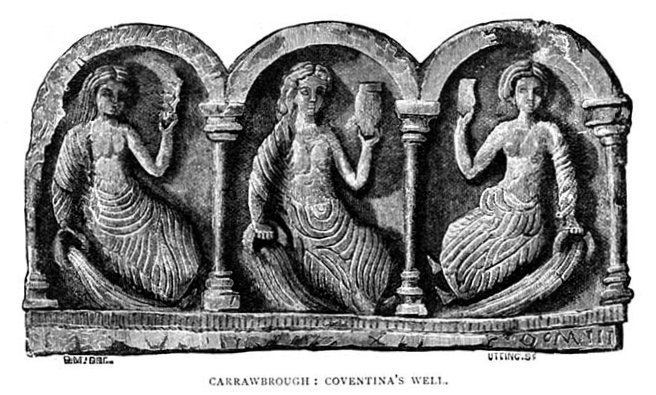 | ||
The pseudoarchaeology of Cornwall concerns aspects of the study of Cornwall that fall outside mainstream archaeology, history, and cultural studies. Pseudoarchaeological approaches differ from the mainstream disciplines in methodology, which often leads to very different ideas. Mainstream scholars generally do not consider the methodologies used in pseudoarcheology to be valid, since they do not follow the scientific method.
Contents
Pseudohistorical myths associated with Cornwall, notably the Arthurian tradition and the Brutus myth form an important part of cultural history and have had great influence.
The density and antiquity of archaeological sites in Cornwall has attracted many, including people associated with the New Age, and neo-pagan movements.
Pseudoarchaeology and ideas like it may go by other names including "alternative archaeology" and Earth mysteries.
Pseudohistory of Cornwall
There is a Cornish legend of the lost land of Lyonesse, which was lost to the sea in the past. The exact location of Lyonesse is in doubt. It is claimed to represent the folk memory of the flooding of the Isles of Scilly and Mount's Bay near Penzance. For example, the Cornish name of St Michael's Mount is Karrek Loos y'n Koos, literally, "the grey rock in the wood". The Breton legend of Ys is a similar concept.
Some people believe that the Cornish language was not the first language spoken in Cornwall after the end of the most recent glacial period within the Ice Age. One idea is that Vasconic languages, related to present day Basque were spoken in Cornwall and other areas of Europe. This idea has been advanced by mainstream scholars, but it has also been used by others in support of pseudohistorical assertions.
Links with the ancient Middle East are also involved in pseudohistorical claims related to Cornwall and the wider Celtic Britain, including speculation concerning the identity of the Picts. Some have associated the Cornish piskies of folklore with the Picts. The identity and origins of the Picts have attracted various speculations, including a Middle Eastern Semitic, or pharaonic Egyptian origin to the Pictish language. Most mainstream scholars believe the Pictish language to have been P-Celtic (i.e. an Indo-European language of the Celtic branch), and there is no real evidence that legends of piskies are related to the historical Picts.
There is evidence that there was long-distance trade in tin or copper from Cornwall in Iron Age times. Some speculate that the traders were of Phoenician or Carthaginian origin. Timothy Champion found it likely that the trade of the Phoenicians with Britain was indirect and under the control of the Veneti of Brittany.
There is also a legendary tradition concerning a visit by the biblical Joseph of Arimathea to Cornwall, which in some forms, makes the claim that the boy Jesus accompanied him.
The Cornish language is also a topic that has attracted pseudohistorical interpretations and folk etymologies, notably the origin of the Cornish word kyttrin, meaning in English, bus (motorbus) (in the context of public transport) Folk etymology has also been associated with surnames derived from the Cornish language. The Cornish language is however of mainstream linguistic, historic, and cultural interest.
John Boson writes in 1710, (transliterated into a revived Cornish orthography):
There is a variety of traditional Cornish folklore which includes stories concerning giants, piskies and other folkloric beings. The Brutus myth, is an important phase in the pseudohistory of Cornwall, wherein Corineus defeated the giant Gogmagog and founded the kingdom of Cornwall.
The pre-Christian era religious beliefs in Cornwall are also important. The preeminent pseudohistoric personage in Cornwall is King Arthur. Although details concerning his life are difficult to separate from later medieval interpretations, he does seem to be based on a historical leader of the Celtic Britons. The legendary Dukes of Cornwall also feature in pseudohistory. The Cornish strand of the Arthurian tradition has been summarised and reviewed in a book entitled Inside Merlin's Cave: a Cornish Arthurian reader 1000–2000.
The 19th century Celtic revival, Neo-Paganism, and the New Age movements draw greatly on the pseudohistory of Cornwall.
Pseudogeography
Ley lines are a popular concept in pseudoarchaeology, although some, including Andy Norfolk, have considered Aboriginal songlines in the context of Cornwall. The pseudogeography of Cornwall has been studied by Carl Phillips. One difference between ley lines and songlines, are that ley lines are straight, whereas songlines may not be.
